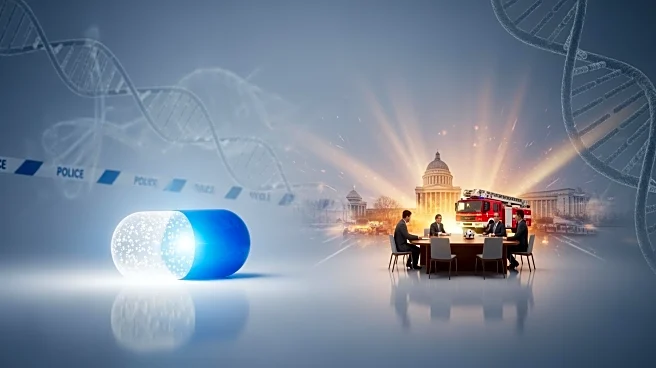What's Happening?
A recent scientific investigation has uncovered the presence of over 300 different chemicals in infant clothing, including traces of pesticides and prescription drugs. The study, published in Environmental
Research, analyzed 43 infant garments and found a wide array of substances, some known to be toxic. This research highlights the potential health risks posed by chemical constituents in fabrics designed for infants. The study also revealed unexpected findings, such as the presence of pharmaceuticals like the antidepressant venlafaxine in more than half of the garments tested. The investigation points to a regulatory blind spot, as current U.S. regulations primarily focus on flammability and lead content, lacking comprehensive oversight for other chemical substances present in textiles.
Why It's Important?
The discovery of toxic chemicals in baby clothes is significant due to the potential health risks for infants, who are particularly sensitive to toxins. Infants have thinner skin and spend long hours in contact with clothing, increasing their exposure to harmful compounds. The presence of pharmaceuticals and other chemicals in textiles raises public health concerns, as these substances can disrupt hormone systems and lead to long-term health issues such as infertility, developmental disorders, and certain cancers. The study underscores the need for stricter regulations and oversight to protect infants from chemical exposure through clothing.
What's Next?
The study suggests several measures to address the safety gap in textile regulations, including establishing rules on chemical transfer from fabric to skin, requiring allergen and ingredient labeling, and increasing testing for substances of high concern. These changes aim to align textile safety standards with other consumer goods and ensure consistent protection across global supply chains. The findings may prompt policymakers to consider stricter regulations on textile chemicals, similar to those in the European Union, to safeguard public health.
Beyond the Headlines
The study highlights the complexity of chemical contamination in textiles, revealing an unexpectedly high level of contamination. This raises ethical and regulatory questions about the safety of consumer products, particularly those intended for vulnerable populations like infants. The findings may lead to increased consumer awareness and demand for safer, organic clothing options, potentially influencing industry practices and regulatory policies.











